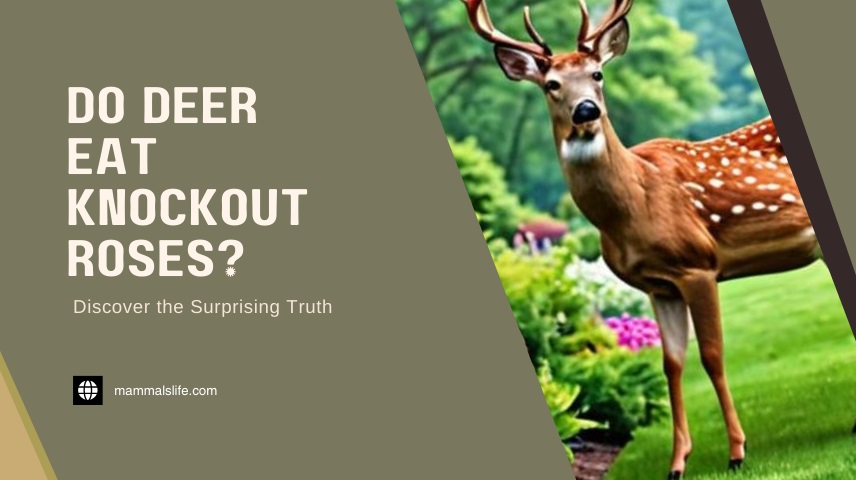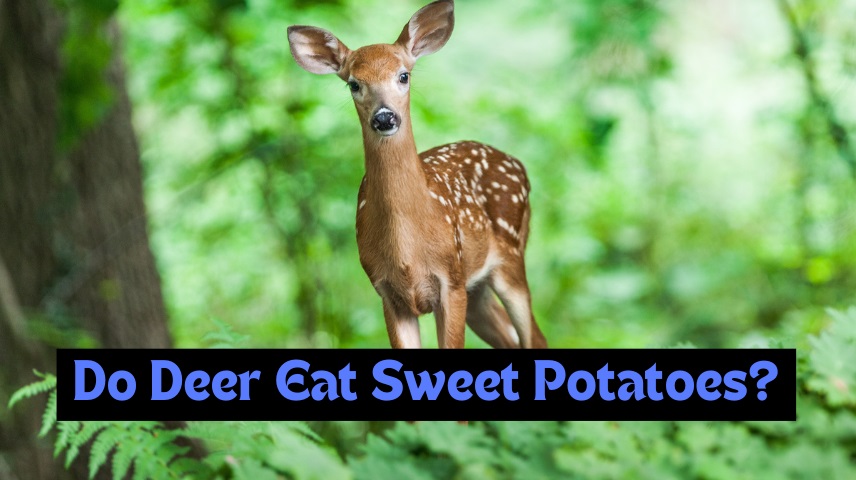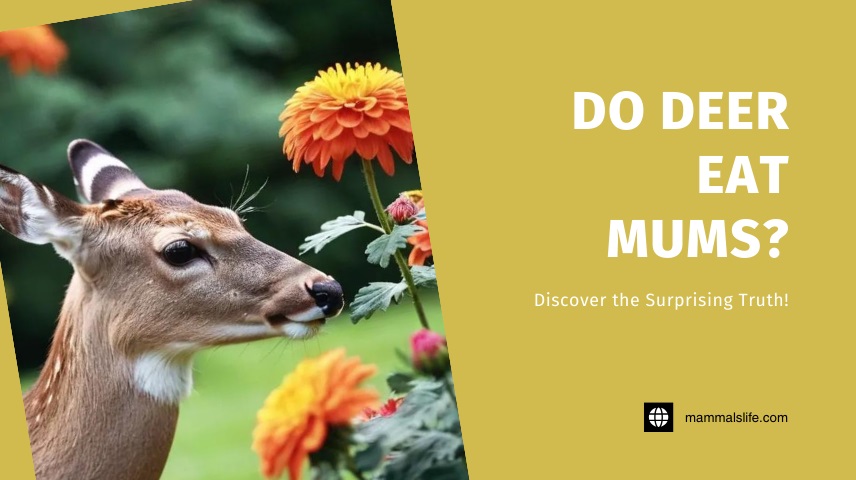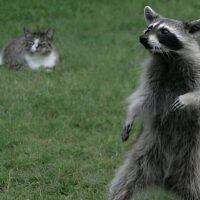Last Updated on February 22, 2025 by Mammals Life
Deer do eat begonias. These plants are not deer-resistant and often attract deer in gardens.
Begonias are popular for their vibrant colors and low maintenance. Gardeners love them for their versatility, as they thrive both indoors and outdoors. Unfortunately, deer find begonias appetizing, which can be frustrating for those maintaining a garden. Deer munch on the leaves, flowers, and stems, causing significant damage.
If you live in an area with a high deer population, consider using deer-resistant plants or protective measures. Fencing and deer repellents can help safeguard your begonias. Understanding deer behavior and plant preferences is crucial for successful gardening in deer-prone areas. Investing in protective strategies can preserve the beauty and health of your begonias.
Deer Diet Basics
Deer are curious creatures with diverse eating habits. Their diet varies by season and habitat. Understanding their diet helps gardeners protect their plants. Let’s explore what deer usually eat and how it changes through the year.
Common Food Sources
Deer love to munch on a variety of plants. Here are some common food sources:
- Grasses: They eat different types of grass.
- Shrubs: Many shrubs are part of their diet.
- Fruits: Apples and berries are deer favorites.
- Leaves: They enjoy fresh leaves from trees.
- Crops: Deer often invade farms to eat crops.
Seasonal Variations
Deer diets change with the seasons. Here’s a breakdown:
| Season | Food Sources |
|---|---|
| Spring | New leaves, tender shoots, and fresh grass. |
| Summer | Fruits, berries, and lush vegetation. |
| Fall | Acorns, nuts, and fallen fruits. |
| Winter | Bark, twigs, and evergreen plants. |
During tough winters, deer may eat less preferred plants. Begonias are not their first choice but may be eaten if food is scarce.
Begonias Overview
Begonias are popular flowering plants. Gardeners love their bright colors. These plants are versatile. They thrive in different environments. Begonias can be grown indoors or outdoors. They are low-maintenance, making them perfect for beginners. Let’s explore the types of begonias and their growing conditions.
Types Of Begonias
There are many types of begonias. Each type has unique features. Here are some popular types:
- Wax Begonias: These have shiny leaves and small flowers.
- Tuberous Begonias: Known for their large, showy blooms.
- Rex Begonias: Famous for their colorful and patterned leaves.
- Cane Begonias: Also called “Angel Wing” begonias, they have tall stems.
Growing Conditions
Begonias need the right conditions to thrive. Here are the key factors:
| Condition | Requirement |
|---|---|
| Light | Indirect sunlight is best. Avoid direct sun. |
| Soil | Well-draining soil is essential. A mix of peat and perlite works well. |
| Watering | Keep soil moist, not soggy. Water when the top inch is dry. |
| Temperature | Ideal range: 60-75°F (15-24°C). Avoid frost and extreme heat. |
| Humidity | High humidity helps. Use a humidity tray or misting. |
Follow these guidelines. Your begonias will flourish and brighten up any space.
Deer And Garden Plants
Gardening enthusiasts often face the challenge of keeping their plants safe from deer. Understanding deer behavior and their plant preferences can help in protecting your garden. This section will explore how deer interact with garden plants, specifically focusing on their browsing behavior and plant preferences.
Browsing Behavior
Deer are known for their browsing behavior, which means they sample a wide variety of plants. They often nibble on leaves, stems, and flowers.
- Deer have a varied diet.
- They prefer young, tender plants.
- They can cause significant damage to gardens.
During the spring and summer, deer are particularly active. They seek out new growth and can devastate a garden in a short time.
Plant Preferences
Deer have specific plant preferences that make some plants more vulnerable. Begonias, with their tender leaves and colorful blooms, often attract deer.
| Plant Type | Deer Preference |
|---|---|
| Begonias | High |
| Roses | Medium |
| Lavender | Low |
To protect begonias, consider using deer repellents or physical barriers. Planting less attractive species nearby can also help divert deer.
- Use deer repellents regularly.
- Install physical barriers like fences.
- Plant deer-resistant species around begonias.
Understanding deer preferences can help in planning your garden layout. This ensures your begonias and other plants remain safe and thriving.
Evidence Of Deer Eating Begonias
Begonias are popular garden flowers. They are known for their vibrant colors. But do deer eat begonias? Let’s explore the evidence. We will look at gardener experiences and scientific studies.
Gardener Experiences
Many gardeners report that deer eat their begonias. They share stories of missing flowers. Some gardeners have seen deer in their gardens. Deer are often seen nibbling on begonias. This shows that deer may like begonias.
Here are some common signs:
- Missing flowers
- Chewed leaves
- Deer tracks near plants
Gardeners have tried different methods to protect begonias. Some use fences. Others use deer repellents. But deer often find a way to munch on these flowers.
Scientific Studies
Scientific studies also provide evidence. Researchers have studied deer diets. They found that deer eat many plants, including begonias. Begonias are not a main food source. But deer do eat them when other food is scarce.
A study by the University of Georgia showed this. They observed deer eating patterns. The study found that deer eat begonias in certain conditions.
Here is a summary of the study:
| Study | Findings |
|---|---|
| University of Georgia | Deer eat begonias when other food is scarce |
These studies help us understand deer behavior. They show that begonias are part of a deer’s diet. But they are not their favorite food.
Protecting Begonias From Deer
Deer can be a gardener’s worst nightmare, especially for those who cherish their begonias. These beautiful flowers are often a target for hungry deer. Protecting begonias from deer requires strategic planning and various methods. Below are effective ways to keep your begonias safe.
Physical Barriers
One of the most effective ways to protect begonias is by using physical barriers. This method creates a physical obstacle that deer cannot easily cross.
- Fencing: A tall fence, at least 8 feet high, can keep deer out.
- Netting: Lightweight garden netting can cover your begonias, making them inaccessible to deer.
- Row Covers: Use row covers to shield your plants, especially during peak deer feeding times.
Natural Deterrents
Natural deterrents can be a great alternative or addition to physical barriers. These methods use scents, tastes, and textures that deer find unpleasant.
| Deterrent | Description |
|---|---|
| Strong Scents | Deer dislike strong scents like garlic and mint. Plant these around your begonias. |
| Soap Bars | Hang soap bars with strong scents near your begonias. Deer hate the smell. |
| Hair Clippings | Sprinkle human hair around your plants. The scent of humans can scare deer away. |
Combining these methods can provide robust protection for your begonias. Stay vigilant and adjust tactics as needed to keep your garden thriving.
Alternative Deer-resistant Plants
Deer can be a gardener’s nightmare, especially if they feast on your beloved begonias. Fortunately, there are many deer-resistant plants that can add beauty to your garden without attracting these hungry animals. Here are some great alternatives to consider.
Popular Choices
Several plants are known to be deer-resistant and can thrive in various conditions. Below is a list of some of the most popular choices:
- Lavender – Known for its lovely scent and purple flowers.
- Marigolds – Bright and cheerful, they also repel many insects.
- Foxglove – Tall spikes with bell-shaped flowers, toxic to deer.
- Bleeding Heart – Heart-shaped flowers that deer usually avoid.
- Russian Sage – Aromatic and vibrant, perfect for sunny spots.
Planting Tips
To ensure your deer-resistant plants thrive, follow these simple tips:
- Choose the right location – Ensure the plants get the appropriate amount of sunlight.
- Use well-drained soil – Most of these plants prefer soil that does not retain water.
- Group plants together – Create a dense planting scheme to discourage deer.
- Consider companion planting – Some plants, like marigolds, can repel pests and protect others.
- Regular maintenance – Keep your garden tidy to reduce deer hiding spots.
By incorporating these deer-resistant plants and following these tips, your garden can flourish without becoming a deer buffet. Happy gardening!
Frequently Asked Questions
Do Deer Eat Begonias?
Yes, deer are known to eat begonias, especially when other food sources are scarce.
How To Protect Begonias From Deer?
Use deer repellents, fencing, or plant deer-resistant flowers around begonias to deter deer.
Are Begonias Deer-resistant Plants?
No, begonias are not deer-resistant and can be appealing to them in certain conditions.
What Flowers Do Deer Avoid?
Deer typically avoid marigolds, lavender, and daffodils due to their strong scents and unappealing tastes.
Conclusion
Deer do eat begonias, so gardeners should take precautions. Consider planting deer-resistant plants nearby. This can help protect your begonias. Using deterrents like fences or repellents is also effective. Keep your garden safe and beautiful with these simple steps. Your begonias will thrive with a little extra care.











